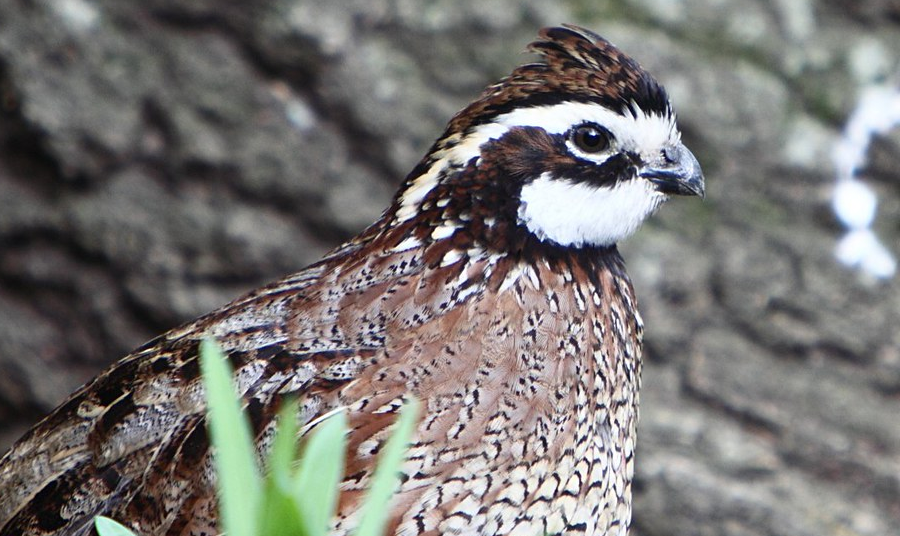When people hear "thermal camera," they immediately think that it has to be used at night time, as if it's a universal law. However, thermal isn’t night vision. Since thermal cameras detect infrared radiation instead of amplifying light, they can be used at any time of the day. The Dark30 Defiance for example, is a vehicle-mounted thermal camera with a 360-degree pan and tilt. Sure, it excels in low light, but it's not limited to the dark. As long as there’s a temperature difference to pick up, the Defiance will be effective. And that makes it surprisingly useful for daytime scouting—even if you’re looking for the elusive quail, a bird that, thanks to its habitat, is as difficult to find as the proverbial “needle in a haystack.”
Understanding Quail Habitat
Before diving into what makes the Defiance perfect for an expedition in the tall grass, let's talk a bit about the North American quail. There are several huntable species of this small, shy ground-dwelling bird, all with varying habitats.

Northern Bobwhite – Bobwhites definitely favor grassy areas for concealment. They thrive in mixed landscapes with patches of tall grass, brush, and weeds, which help them stay hidden from predators.
California Quail – While they don’t exclusively seek out tall grass, California Quail use low shrubs, brush, and grassy patches to blend in. They’ll often stick close to dense bushes, using them as both cover and for foraging.
Gambel’s Quail – These quail don’t rely on traditional grass; instead, they camouflage themselves in desert vegetation like cactus, low shrubs, and arid ground cover. This type of cover offers the same visual breakup as grass would in other environments.
Mountain Quail – They prefer to hide in dense forest vegetation, including bushes and tall brush in mountainous regions. Though not typically grass, these habitats offer the same kind of concealment.
Scaled Quail – Scaled Quail are often found in open desert grasslands with low, sparse vegetation. They rely on ground cover like shrubs, shorter grasses, and rocky terrain for camouflage, adapting to open areas with scattered patches rather than dense grass.
Montezuma Quail – This species is quite secretive and prefers the high, grassy meadows and oak woodlands in mountainous regions of the Southwest. They are an exception in that they favor dense grassy areas mixed with forested terrain.
Quails are notorious for their camouflage abilities and tendency to hunker down rather than fly off when approached. They blend into areas filled with brush, tall grasses, and shrubbery, their plumage matching the browns, grays, and greens of their surroundings.
In fact, when quail are startled, they’re likely to freeze rather than flutter, relying on their camouflage instead of wing power. And since they spend their days moving in and out of these thick hiding spots, a thermal camera like the Defiance can help pick up their movement patterns early on, giving hunters an edge before the season even starts.
Why the Defiance is Perfect for Pre-Hunt Scouting

When guides scout an area, their objective is to understand the landscape and get a feel for where quail are most likely to spend their time. The Defiance’s thermal capabilities come in handy here, letting you get a lay of the land and potentially spot areas where quail gather.
Using the Defiance’s thermal imaging, guides can identify areas where vegetation density creates ideal cover for quail. While it may not detect the quail directly, the Defiance can help spot key thermal patterns in the landscape, such as areas where the sun heats up patches of shrubs or tall grass, highlighting potential habitats and nesting spots. By mapping out these zones, guides can strategize entry points and hunting areas, ensuring they focus on the spots quail are more likely to be hiding during hunts.
Habitat Assessment
While quail themselves might not leave a lasting thermal signature, the Defiance is excellent for detecting other, larger animals that share the same habitat. The presence of various wildlife, like rabbits, other ground-dwelling birds, or small mammals, indicates a healthy ecosystem with food sources and shelter that attract quail as well. By identifying these active zones, guides can gain insight into areas likely to attract quail, even if they aren’t directly visible.
Why does that matter? Because a habitat bustling with wildlife suggests a healthy environment, which usually translates to good conditions for quail. This method allows hunters and guides to double-check if their go-to quail grounds are still in prime shape.
Predator Monitoring
Predators pose another challenge for quail populations. Coyotes, foxes, and even certain raptors like hawks can all prey on quail, thinning out their numbers in a hunting area. The Defiance’s 640x480 <30mK NEDT thermal sensor lets you scan for these predators during early morning scouting, helping you assess whether any nocturnal or crepuscular (that’s a fancy word for “active at dawn and dusk”) threats are lurking nearby.
Seeing these predators can be useful in planning: knowing where predator hotspots are could suggest safer areas for quail to congregate, or it could tip you off to potential changes in quail behavior—if they’re avoiding certain areas, it might be because predators are frequenting them.
Safety First
While quail hunts are generally safe, accidents happen, especially in rugged terrain where brush and tall grasses obstruct views. The Defiance’s thermal view is handy for spotting other hunters, vehicles, or even random hikers in the area. This heads-up is invaluable in crowded public lands or if you’re guiding less experienced hunters who need the assurance of visibility around them.
A Handy Tool for Guides
For hunting guides, scouting with the Defiance can offer incredible value. Not only does it let them check out prime quail spots in low light, but it also enables a holistic view of their hunting grounds. Guides can use it to understand where quail are roosting, monitor predator activity, and keep tabs on the safety of their clients. The camera’s versatility means guides can use it as a scouting tool year-round, building up a solid knowledge base of where to expect quail, depending on the time of year and conditions.
To shop the Dark 30 Defiance, click here.
Frequently Asked Questions
Can thermal cameras only be used at night?
No, thermal cameras can be used at any time of the day as they detect infrared radiation, not light.
What makes the Dark30 Defiance thermal camera effective?
The Dark30 Defiance is effective as long as there is a temperature difference to pick up, making it useful for daytime scouting.
What are the different habitats of quail species?
Quail species have varying habitats including grassy areas, low shrubs, desert vegetation, dense forest vegetation, and open desert grasslands.
How do quails camouflage themselves?
Quails blend into their surroundings by matching the colors of brush, tall grasses, and shrubbery, relying on camouflage rather than flight.
How can a thermal camera help in quail hunting?
A thermal camera like the Defiance can help pick up quail movement patterns early on, giving hunters an edge before the hunting season starts.

